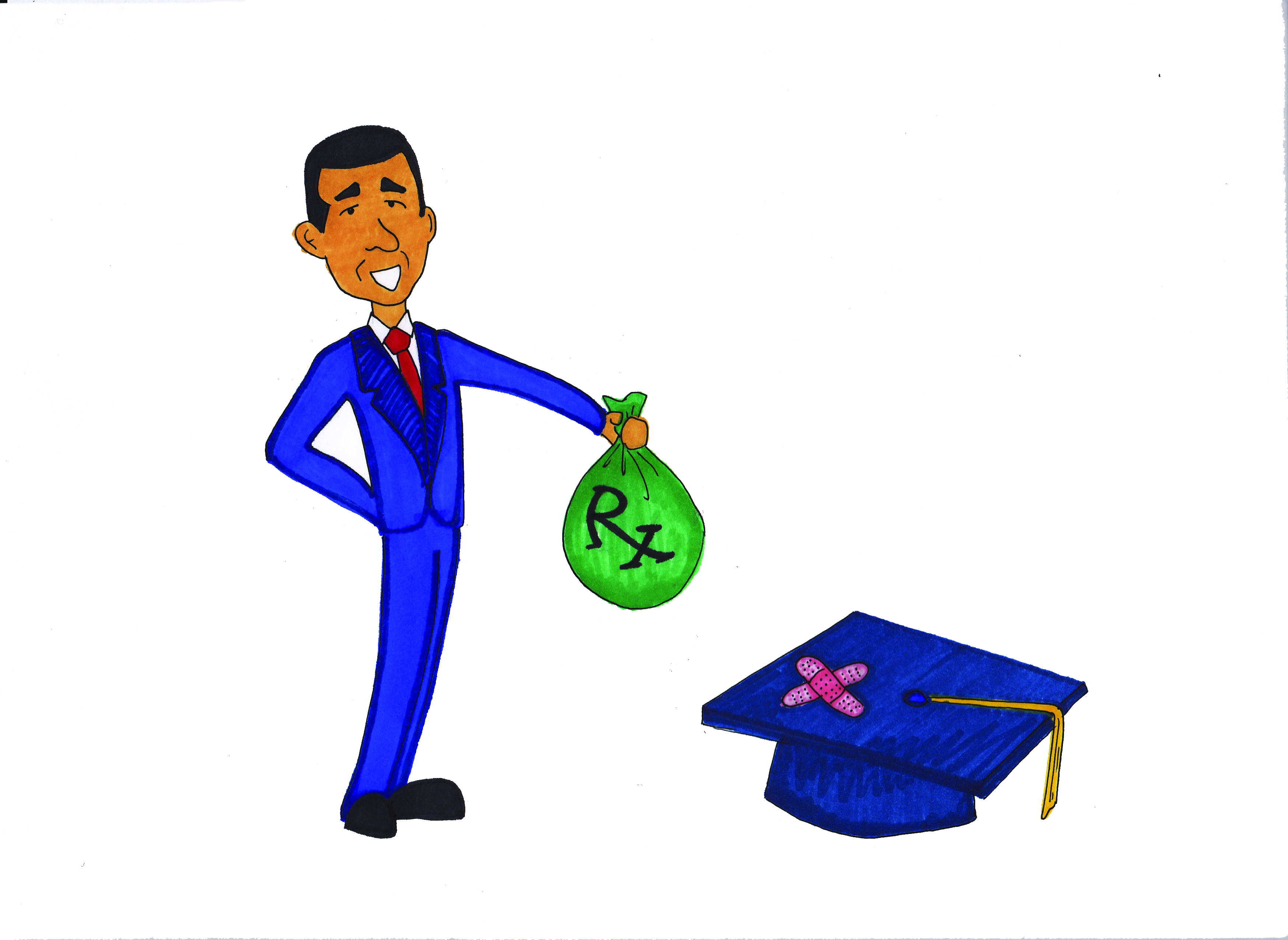
President Barack Obama recently announced a proposal to consolidate student loans and decrease monthly payments. In an effort to assist those suffocating from student loans to repay, the president provides hope for a debt-free life.
Being overwhelmed with debt is stressful, and the president takes a long-anticipated and much-needed step toward making higher education more accessible. Despite the grim economy and dismal job market, the average college graduate still has a higher income than someone without a bachelor’s degree. Even with the surplus of degrees, college is still worth the costs.
But still, more needs to be done. In October, the Federal Reserve Bank of New York revealed that student debt had officially surpassed national credit card debt. In 2011 alone, public colleges increased tuition and fees by 8.3 percent ““ twice the rate of inflation. And because of escalating tuition rates across the country, borrowing per student has skyrocketed 57 percent in the last decade.
Perhaps because the president can personally attest to the difficulties accompanying student loans, he responded quickly. Cumulatively, attending Harvard Law School left him and the first lady about $120,000 in debt, which they managed to pay off only a few years before he became president. Two weeks after the Federal Reserve Bank of New York report was released, Obama announced a plan to make college more affordable. The proposal would take effect in 2012. He suggested a two-part approach to alleviate burdensome financial obligations.
First, the government plans to consolidate student debt. Currently, students may have federal and private loans, all with varying interest rates. Federal interest rates are typically lower than their private counterparts. And under this plan, the federal government would acquire the private loans, thereby allowing borrowers to repay their loans directly to the government at a single, lower interest rate.
Second, President Obama wishes to decrease monthly payments to 10 percent of discretionary income (the money left after one’s necessities, like food and shelter, have been paid for). Presently, students with outstanding loans must contribute 15 percent of their monthly discretionary income toward repaying them. This system would reduce monthly payments for more than 1 million college students and borrowers. And with these terms, someone who makes $30,000 a year and owes $60,000 in federal loans would be able to diminish their monthly payments by more than $500, from $690 a month to $113. As an added bonus, Obama wants to reduce time-based debt forgiveness from 25 years to 20 years.
Meaning, after 20 years, unpaid student loans would dissipate.
There are many arguments against the plan.
One complaint claims debt forgiveness encourages irresponsibility in students when choosing majors. The story behind this reasoning is old. Economically speaking, some majors are more valuable than others. The truth is, borrowing money for a college degree is risky, and certain majors offer better job prospects and thus higher potential to repay loans in full. Yet regardless of the degree earned, universities charge the same tuition ““ an implicit way of stating that no major is better than any other, and students should study what they enjoy. Student loans should not shackle students to majors perceived to have more money-making prospects.
Critics also assert that students who pursue these “less valuable” degrees may end up relying on taxpayers to bail them out of their student loans ““ taxpayers who may have never attended college themselves. This would pass the burden of paying for college from those who benefit from college ““ the students ““ to those who did not graduate. Although each individual’s case for forgoing college is unique, making college affordable will encourage more of these people to pursue higher education themselves.
Others wonder where money for this plan will be found, particularly because of our nation’s massive budget deficit. But what they do not realize is that this is a great investment back into our country. College degrees, whatever the major, lead to higher average salaries; that further translate into higher future taxes collectible for the government.
Also, an article in the Atlantic Monthly revealed that average students may see their loans only drop between about$4 to $8 and that a small percentage of students will benefit from the payments proportioned to income.
Most importantly, many feel this is an unconstitutional stretch on what an executive order can accomplish and should instead remain a legislative matter.
I understand these concerns, but it is imperative that action is taken in regard to the enormous student loan problem.
Obama’s plan still has kinks that must be worked out. For example, this policy would apply only to those who took out student loans post-2008. What about those who just missed the cutoff, those who are also drowning in debt?
Ideally, increases in tuition and fees should be stopped, but without this program, Americans with student loans will continue to be prisoners to their own debts, unable to make ends meet and living a life dictated by their loans. Hopefully, his executive order will force Congress to solve this issue with urgency. We need a fundamental change in the way student loans are lent and borrowed.
This is just a bandage on a serious wound, but it is the first step towards recovery. Everyone deserves the chance to live the life of his or her dreams.
Do you think Obama’s loan plan is a step in the right direction? Email Lee at jlee@media.ucla.edu. Send general comments to opinion@media.ucla.edu.
